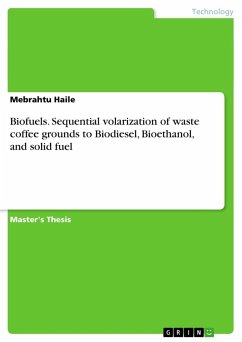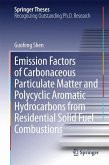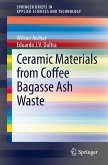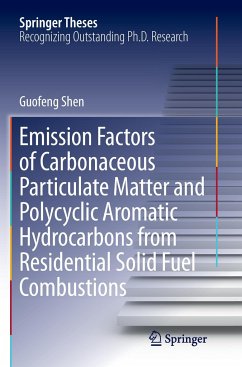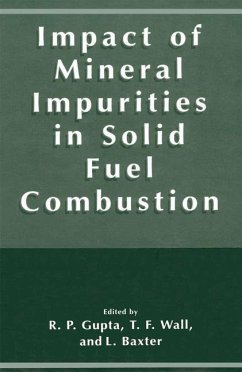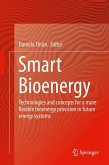Master's Thesis from the year 2014 in the subject Energy Sciences, , course: Biofuels, language: English, abstract: In this study, the utilization of waste coffee residue for biodiesel production, its solid byproduct after oil extraction for bioethanol production, as well as the second byproduct after bioethanol production for solid fuel and compost production was investigated. For the study, waste coffee residue sample was collected from TOMOCA PLC, Addis Ababa, Ethiopia. The oil was then extracted using n-hexane and resulted in oil yield of 19.73 %w/w. The biodiesel was obtained by a two-step process, i.e. acid catalyzed esterification followed by base catalyzed transesterification using catalysts sulfuric acid and sodium hydroxide respectively. The conversion, after esterification of waste coffee residue oil in to biodiesel, was about 80.4%. Various parameters that are essential for biodiesel quality were evaluated using the American Standard for Testing Material (ASTM D 6751-09). The results obtained for kinematic viscosity (5.3 mm²/s), carbon residue (0.033%), flash point (222°C), ash content (0.0123%), water and sediment (<0.01%), iodine value (73.41 gI2/100g), acid value (0.78), copper striping corrosion (1a) and calorific value (38.4 MJ/kg) revealed that all quality parameters are within the range specified except for acid value. The fatty acid composition of the biodiesel was also analyzed by Gas chromatography and the major fatty acids found were linoleic acid (39.8%), palmitic acid (37.6%), oleic (12.7%), and stearic acid (7.6%). In addition, the solid waste remaining after oil extraction was investigated for possible use as a feedstock for the production of bioethanol. Hydrolysis of the spent was carried out using dilute sulfuric acid followed by fermentation using S. cereviciae, and resulted in bioethanol yield of 8.3 %v/v. Furthermore, the solid waste remaining after bioethanol production was evaluated for compost and solid fuel applications. The result indicated that the processed coffee residues could still be used as compost (21.9:1 C/N) and solid fuel (20.8 MJ/Kg). Therefore, the results of this work may suggest a new insight to production of biofuel from waste materials.Keywords: Waste coffee residue, Biodiesel, spent of WCR, Saccharomyces cereviciae, Bioethanol, solid fuel, compost
Hinweis: Dieser Artikel kann nur an eine deutsche Lieferadresse ausgeliefert werden.
Hinweis: Dieser Artikel kann nur an eine deutsche Lieferadresse ausgeliefert werden.

